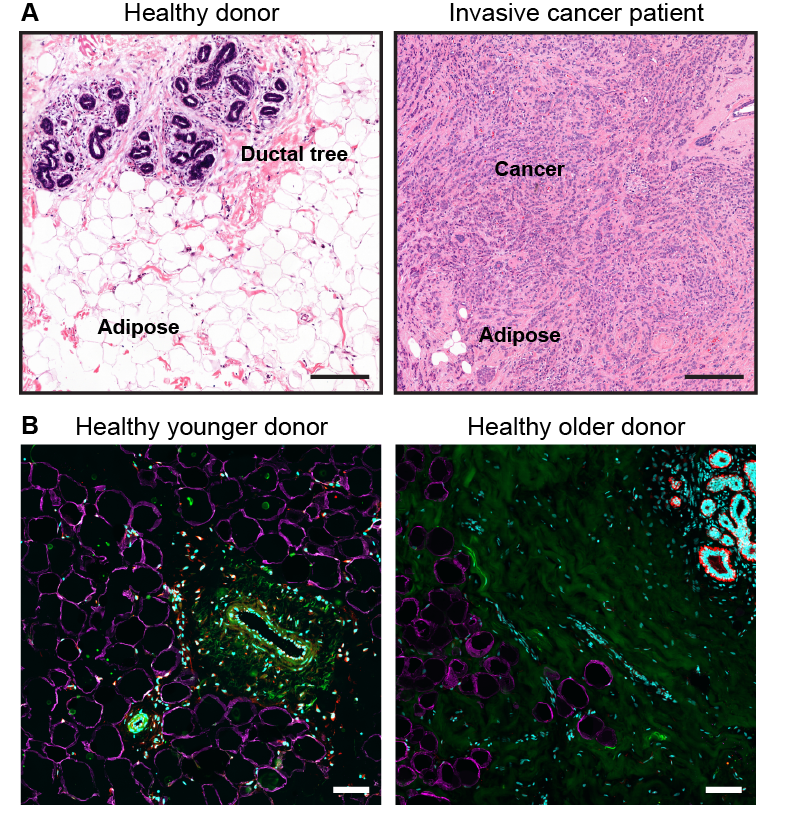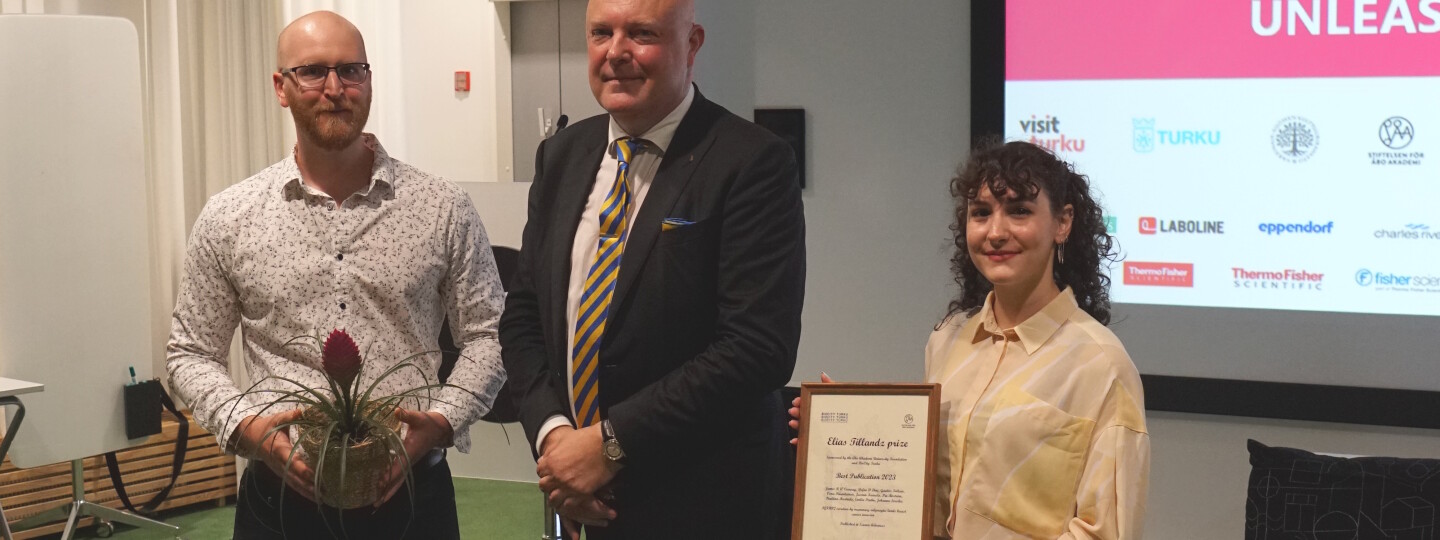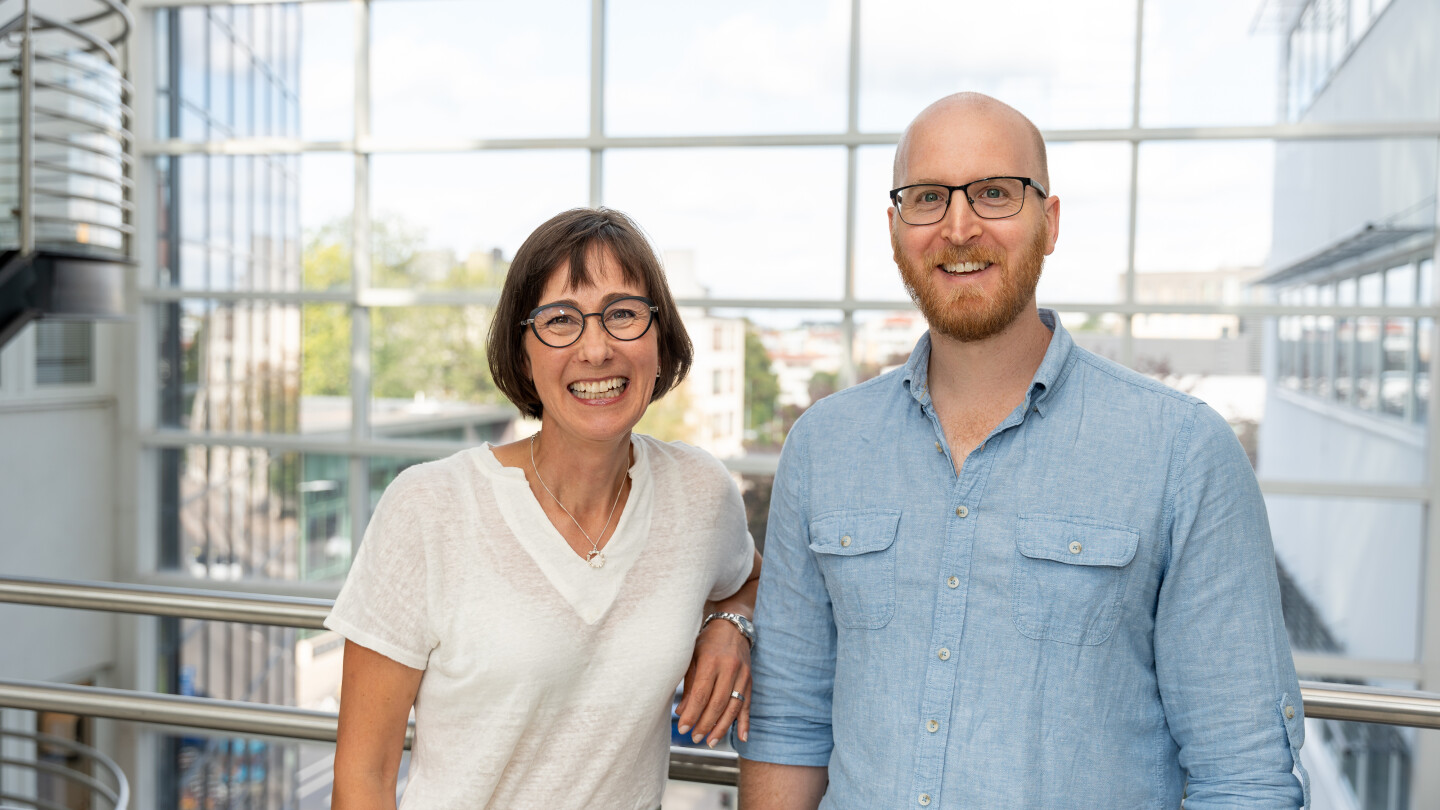The Elias Tillandz prize 2024 was awarded to an outstanding research article which offers a possible explanation as to why higher breast density and older age increase the risk of breast cancer. The Prize was awarded to the researchers at the BioCity symposium on Thursday, 29 August 2024.
The Elias Tillandz prize is awarded annually to the best scientific paper published by a research group in BioCity Turku. The Prize is €12,000, jointly funded by BioCity Turku and Åbo Akademi University Foundation. BioCity Turku is an umbrella organisation supporting and coordinating research on life sciences and molecular medicine at the University of Turku and Åbo Akademi University.
Scientific Director of Biocenter Oulu, Professor Johannes Kettunen, and his team selected the winner from amongst the suggestions made by the research community.
This year, the prize was awarded to an innovative study lead by Professor Johanna Ivaska and Postdoctoral Researcher, Dr. James Conway. In the study, researchers at the Turku Bioscience Centre, University of Turku and Turku University Hospital made an extraordinary discovery using patient samples from a cohort of women who’d had mastectomies.
The findings of this collaboration between clinicians and researchers in Turku revealed that healthy fat cells in the breast, also known as adipocytes, secrete a potent factor called IGFBP2, which effectively contains invasive breast cancer at the primary site.
The Elias Tillandz prize has been named after Professor Elias Tillandz (1640–1693) of the Royal Academy of Turku. Tillandz introduced empirical life science to Finland and published the first scientific study in Turku.
Secreted factor in the healthy adipose tissue of the breast prevents the spread of cancer
Adipocytes generally get a bad rap for promoting cancer progression, but the study led by Professor Ivaska and Dr. Conway demonstrates that healthy breast fat can play a protective role.
“Healthy fat helps to maintain tissue homeostasis and contain the cancer," explains Academy Research Fellow, Dr. Emilia Peuhu, a key collaborator in the study. “It's time to re-evaluate our assumptions and recognize the import role of these unsung heroes.”
Breast cancer patients who experience the transition from pre-malignant ductal carcinoma in situ (DCIS) to invasive ductal carcinoma (IDC) face a considerably poorer prognosis and an increased risk of developing metastatic disease. The research team's work focuses on identifying factors that impede this invasive progression, with IGFBP2 emerging as a key factor secreted by healthy adipocytes.
In addition to the loss of adipocytes that occurs as women age, this study found that older women had reduced expression of IGFBP2, suggesting that the anti-cancer activities of breast adipocytes might also decrease with age.
“Increasing age and higher breast density, with fewer adipocytes, are two well established risk factors for the development of breast cancer. Our research provides a possible explanation for this increased risk, as we found that IGFBP2 levels are also reduced in older individuals and that healthy breast adipocytes can secrete factors such as IGFBP2 to inhibit tumour progression,” says Professor Ivaska, the principle investigator on the project.
The implications of this discovery extend to the understanding of mammary density and its connection with poorer prognosis.
"While restoring IGFBP2 into the mammary environment might not be possible, the use of antibody-based inhibitors of IGF-II could help to contain non-invasive breast lesions by acting in a similar fashion to IGFBP2 itself, which we have already observed in our model systems,” Dr. Conway, the lead researcher of the team, adds.
The team is now exploring therapeutic avenues that have opened up as a result of these recent findings.

The awarded article “IGFBP2 secretion by mammary adipocytes limits breast cancer invasion” was published in Science Advances in July 2023.
> Press release: The Power of Healthy Breast Adipocytes in the Fight Against Breast Cancer
> Research article: IGFBP2 secretion by mammary adipocytes limits breast cancer invasion
More information
Johanna Ivaska, tel. +358 40 502 0812, joivaska@utu.fi
James Conway, james.conway@utu.fi
Photo at the top: authors James Conway and Defne Dinc with Vice Rector of Åbo Akademi University Reko Leino (in the middle)




